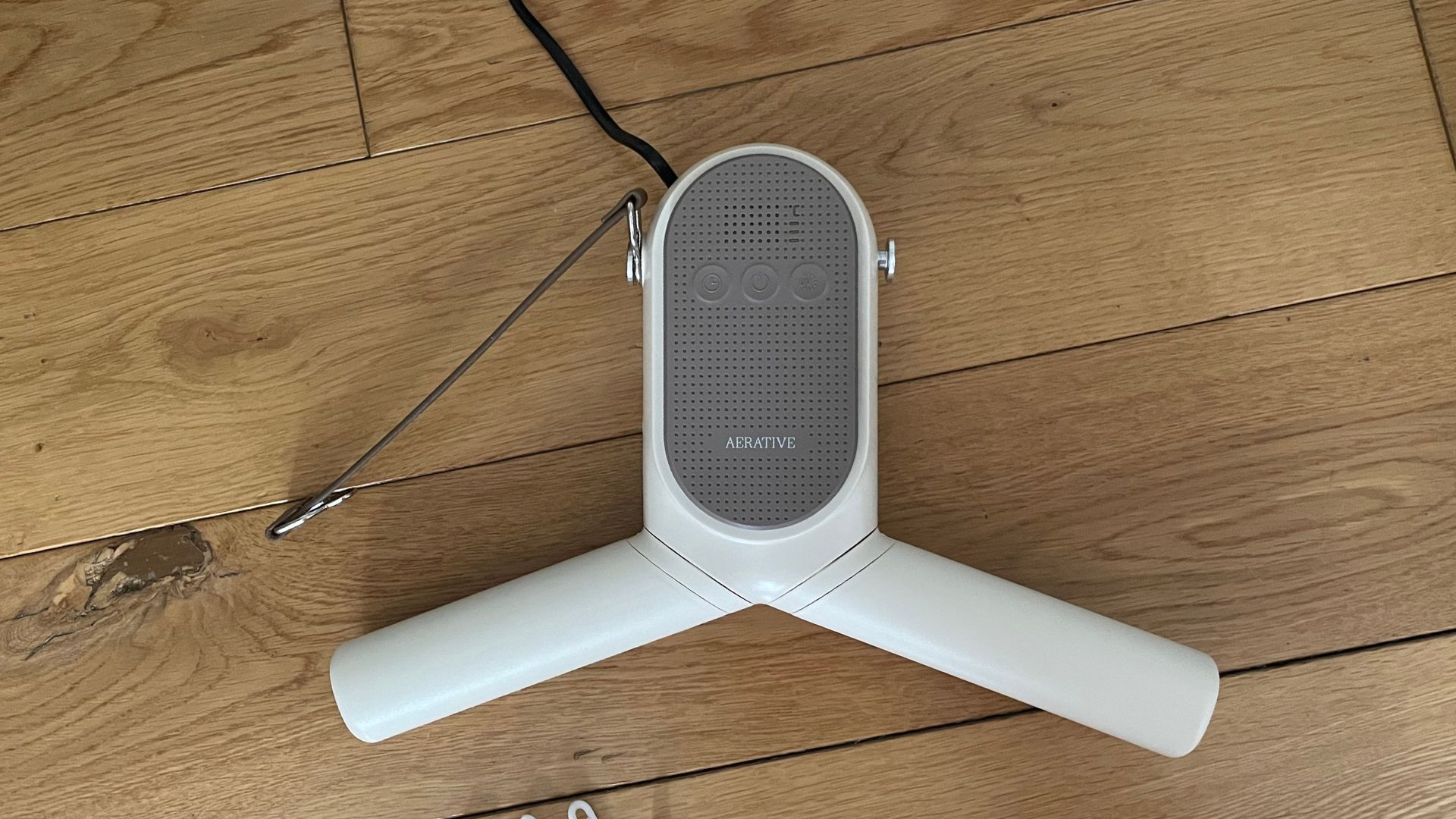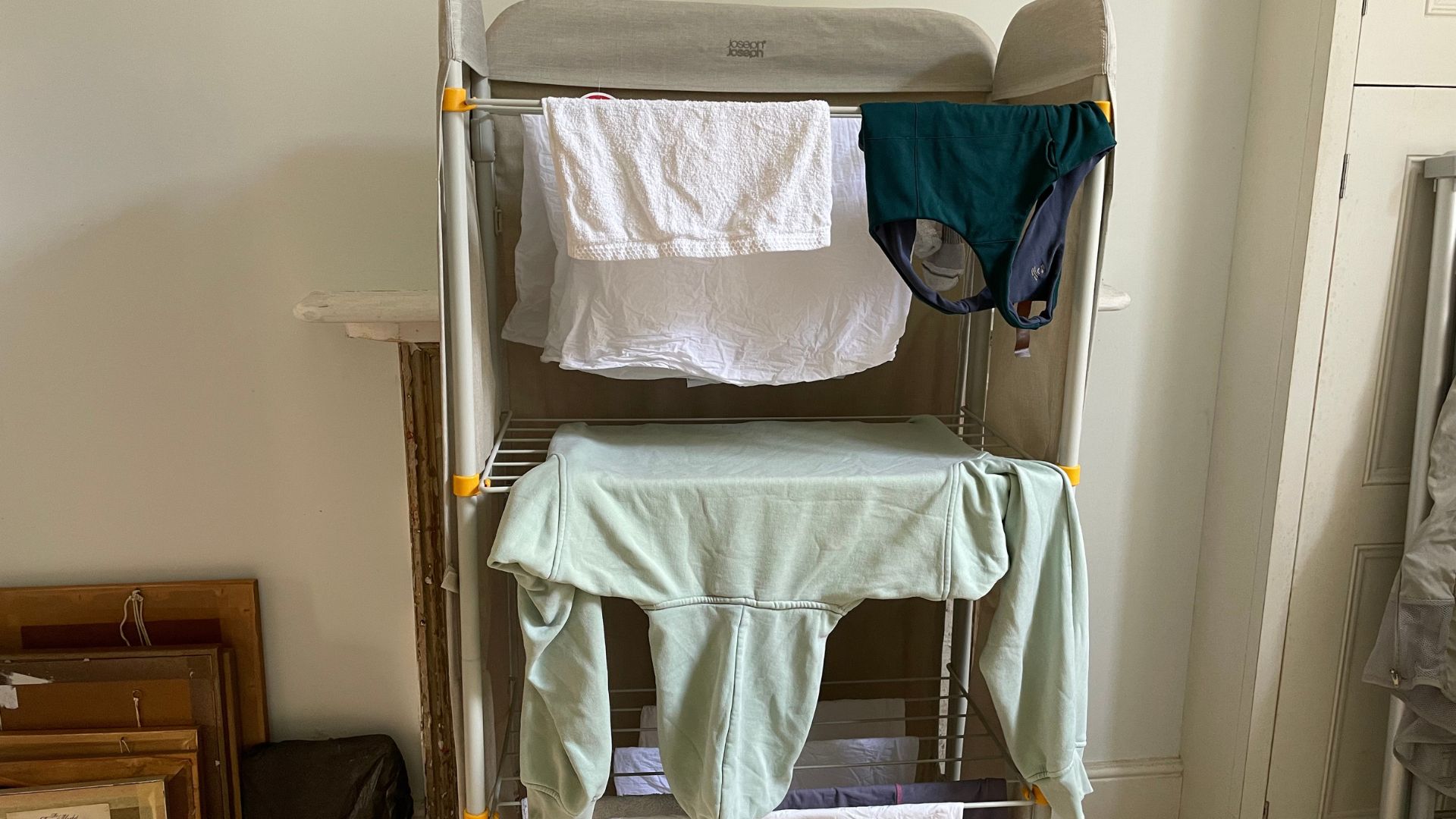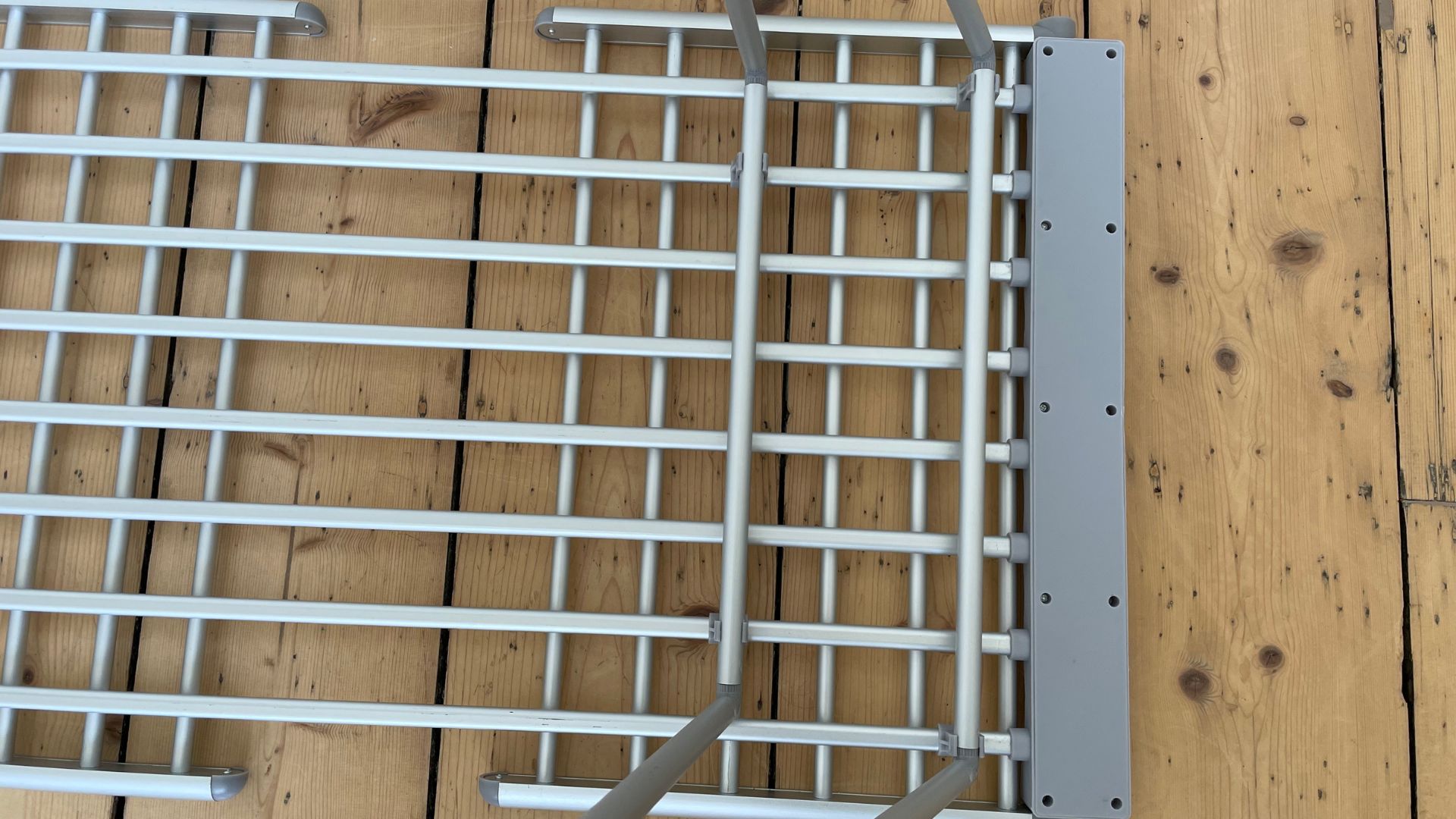How we test heated clothes airers - hot takes from the experts
Proof that this isn't all hot air


Here's all the behind-the-scenes information on how we test heated clothes airers at woman&home. From laundry load times to drying details, it's time to air the clean and cupboard-dry laundry.
Chosen correctly, your heated clothes airer will half, if not quarter, the drying time for your laundry. If chosen incorrectly, it'll become a bulky obstacle that clutters up your home. How can you tell the difference? With the help of the experts.
I've been testing all of the best heated clothes airers on the market, with models from Dry:Soon, Dunelm, Aldi, Minky, Beldray, and more. There's a whole host of different shapes, sizes, tiers, and contraptions out there and, if you're wondering how I come to a conclusion on which the best ones are, here are all the details behind my testing process. It takes the ethos of woman&home's overall how we test policy, and adds heated airer-specific elements.
How I decide which heated airers to test



When I'm thinking about the best heated airers on the market, I like to know that we have all bases covered. I have a spreadsheet of all the models on the market with notes on what category of heated airer they fall into. For each category, I like us to have tested at least three of the market-leading models. Even if they've been around for years, it's important for us to have a hands-on review written up for you.
Here's a rough outline of what my spreadsheet covers.
| Type of heated airer | Who they suit | What they're good for |
| Freestanding | Families with lots of space and big laundry needs | Super quick drying, low cost, lightweight |
| Foldable | Apartment dwellers and small homes | Compacting down, easy storage, and energy-efficiency |
| Tower airers | Large families, homes with high ceilings and minimal small space | Big capacity, saves floor space |
| Wall mounted airers | Small homes, apartment, people who want permanent fixtures | Small homes |
| Pod airers | People with shirts and t-shirts to dry | Drying shirts, jumpers, t-shirts, and blazers |
| Hanger airers | Frequent travellers and business people | Drying shoes and single items of clothing |
It's my job to stay on top of the latest and greatest in the world of heated airers. You'd be surprised at just how much innovation the industry sees. So, as soon as something pops up that I think you'd like, I start doing my research. I'll deep dive into the type of heated airer, look at reviews, and any claims that the brand makes so that I know exactly what to expect.
Why I talk about unboxing and first impressions



Lots of people think of the unboxing process as momentary, not at all connected to the day-to-day usage of your heated clothes airer, but I always put it into reviews, because I think it tells you a lot about a brand. If your heated clothes airer arrives neatly packaged in sustainable materials, with little to do in the set-up process, it's an indicator that the brand has put you at the forefront of their minds. When they pay attention to details like this, chances are, they'll pay attention to other important factors more than brands who don't.
Sign up to our free daily email for the latest royal and entertainment news, interesting opinion, expert advice on styling and beauty trends, and no-nonsense guides to the health and wellness questions you want answered.
I always make a point of commenting on sustainable, recyclable packaging for two reasons. The first is that I have a small main bin at home and I don't want it to be full of polystyrene and plastic, so I like it when brands keep things to a minimum. Secondly, in this day and age, there are plenty of sustainable ways to package and transport heated clothes airers, so, for the sake of the environment, I think all brands should be making an effort to do so.
After I've got the heated clothes airer set up, I'll take a step back and make notes of my first impressions. You'll do the same thing, assessing aesthetics, space, and how it looks. It's important to know whether you'll need a few hours with a screwdriver before you can use this or whether it's a breeze to get up and running.
The official tests

Once the heated airer is up, it's important to get testing. First, I'll talk you through controls. Lots of models have auto-shut-offs and timers and they might have different heat settings. I'll walk you through all of these so that you know what to expect.
Each heated airer will have different loading techniques for drying clothes indoors too. Winged heated airers should be loaded from the middle out; tiered heated airers go top down; and pod or hanging heated airers will need to be weighted evenly across both sides.

Once that's out of the way, I'll plug the heated airer in and see how long it takes for the bars to warm up. I'll check that they don't get too hot (these can be hazards for children and dogs) and I'll time them. I would expect the bars to be as warm as a radiator within five minutes. The proof of the heat, however, is in the drying.
I always do three loads of washing: a light load, a medium load, and a heavy load. The light load will weigh 5kgs, the medium weigh 8kgs, and the heavy load will be up to 16kgs. I try to get different textures in each load, with cottons, denims, towels, sportswear, and polyester clothing in each batch. I generally use the same clothes across all of the different heated airers, since that is a much fairer test for comparisons.
Once I have the clothes loaded onto the heated airer, I'll set a timer. Every two hours, I'll come back and check on how the clothes are drying. If it looks like the heated airer will be speedy or if the clothes are nearly dry, then I'll check on them every half an hour. When the clothes are cupboard dry, I'll stop the timer and make a note. That's the end of the drying test.

Why I talk about accessories

Not every heated airer comes with accessories, but if they do, I'll make a note of them and I'll test them too. Sometimes, this is as simple as a cover for the whole airer. In other instances, I might have pegs or special mesh plates for delicates. These can be really useful and well worth having, but if they feel a little flimsy and cheap, they're only disappointing.
Why I talk about storage

For most of the time, your heated airer won't be up and assembled. Therefore, it's important that it compacts down and can be stowed away without needing a room to itself. I'll let you know if it breaks down into different elements, whether it's stiff to fold away, and how easy it is to carry around. It might look like a small section, but this carries a lot of weight in how nice this is to use in everyday life.
Deciding who it would suit and whether you should buy it

Shopping around can be exhausting, which is why I do it for you in this section. I've tested all of the best heated airers on the market, so I'm always naturally comparing them as I run through my tests. This is the formal place for me to pick one or two models that are similar prices or that have similar functions. I like to give you an upgrade and a downgrade, so you know exactly where this sits. You'll be able to judge whether you're willing to spend a little more money on a more luxurious model or whether you think you can get away with skimping a little. Generally, after reading this section, you'll get a good grasp on whether this is a heated clothes airer that's offering you good value for money.
Deciding who it would suit and whether you should buy it

After all of the tests, I'll come to a conclusion on whether I think you should buy it. I'll talk about how much the heated airer costs to run, who it would suit, and the kind of homes that it would work best in. Not every heated airer is appropriate for every kind of home, so I make sure that you're picking the right one.

Laura is woman&home's eCommerce editor, in charge of testing, reviewing and creating buying guides for the Homes section, so you'll usually see her testing everything from the best dehumidifiers to sizing up the latest Le Cruset pot. Previously, she was eCommerce editor at Homes & Gardens magazine, where she specialised in covering coffee and product content, looking for pieces tailored for timelessness. The secret to her heart is both simplicity and quality. She is also a qualified Master Perfumer and holds an English degree from Oxford University. Her first editorial job was as Fashion writer for The White Company.